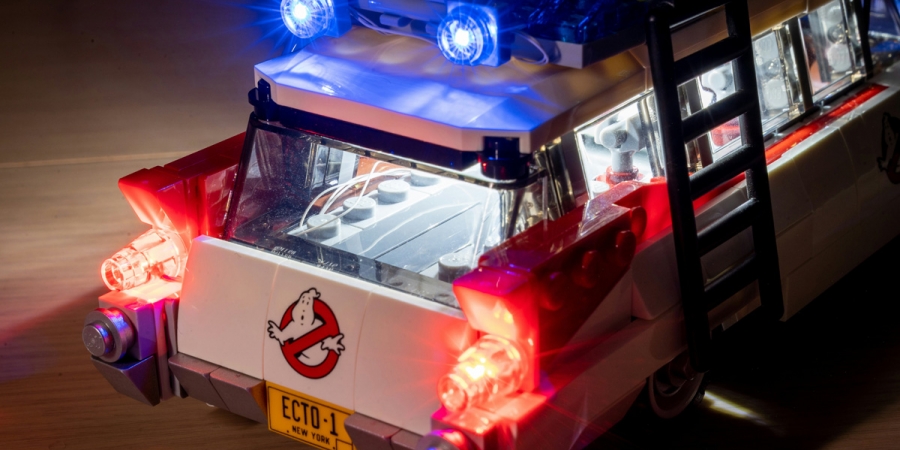This portable particle accelerator is surprisingly one of the most plausible technologies in these movies, aside from the ghost catching part, and you could probably build your own if you had a working knowledge of physics and a couple hundred grand sitting around.
What kind of particle accelerator powers the proton pack? Well, here's where we run into our first problem. Though the proton pack is traditionally referred to as a cyclotron, in the 2016 film the proton pack is also referred to as a synchrotron, but we can start with the cyclotron because one leads to the other.
In 1932 American nuclear scientist Ernest Oh Lawrence invented the cyclotron, which was the world's first circular particle accelerator. He won the Nobel Prize for this invention in 1939. His circular design allowed Lawrence to accelerate particles like protons and electrons up to much higher speeds than ever before, allowing the rest of the world to do even more awesome science.
Here's what Lawrence actually came up with. To hollow D-shaped pieces of metal. which he called Ds. These would be separated by a gap in the center and connected to an oscillating electrical current. This would all be inside a larger metal device that is bounded on the top and the bottom by large electromagnets providing a static magnetic field.
There'd also be an outlet for accelerated particles and an inlet for the particles to be accelerated themselves right in the center.
Now as to how it actually works, let's say a particle is inserted right at the center of the Ds, depending on its charge it will be attracted either to the positive or the negative D and will be accelerated towards that side by the electrical current. Let's say it heads towards positive and once it is inside the D the magnetic field encourages it to curve its path heading back towards the other D.
Once that happens the electrical current is time to change so that now once it heads back across the gap it is accelerated and with a higher velocity, it's going to curve by that magnetic field a little bit more and more in this magnetic field stays static while the electrical charge is oscillating.
Every time it crosses that gap the spiral gets wider and wider and wider until you have a particle that is heading towards the outlet of the device that is going at very very high speed.
In the case of protons they emerge from the cyclotron in a beam that turns the air a faint blue. It's not quite Ghostbusters proton pack, but this is real.
What about the more modern synchrotron? The synchrotron was the next evolution of the cyclotron and it didn't use alternating electrical currents, it used changing magnetic fields to bend a particle around a ring. Particles would start out in a linear particle accelerator and then would be inserted into the larger ring already at speed.
Then they would be accelerated along these straight paths, but their paths would be bent by large magnets placed around the ring and by changing the magnetic field strength at these magnets the particles could be accelerated faster and faster without having to change the electrical field like you did in the cyclotron. This is the precursor to the large particle accelerators that we use today.
Where does all this leave the proton pack from Ghostbusters? Well, while both of these accelerators can be scaled up into massive devices, both have versions that could fit on your desk and maybe even on your back. The proton part of the proton pack is feasible and a beam of protons isn't harmless, it reacts quite a lot with normal matter actually. That's why so-called "proton therapy" is used to treat some kinds of cancers and it comes directly from cyclotrons and synchrotrons - although more study is needed to determine if this therapy is a beneficial procedure on the whole.
We have two very real particle accelerators that with a few technological tweaks could feasibly fit on your back and shoot protons at an object and if a ghost was negatively charged then the positively charged protons certainly would interfere with its ability to cause something strange in their neighborhood.
Egon probably has a better answer than I do. I ain't afraid of no
ghosts, but I am afraid of putting an unlicensed particle accelerator on my back.








 See More on Audible
See More on Audible
Comments
Want To Join The Conversation?
Sign in or create an account to leave a comment.
Sign In
Create Account
Account Settings
Be the first to comment.